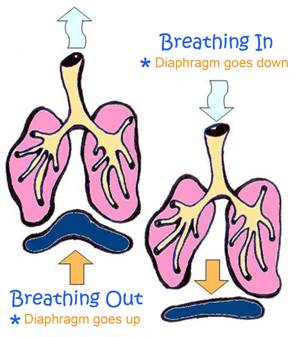Relaxation
 With changing societies and expectations, today’s caregivers are under more stress than ever. As a caregiver you may be experiencing an overload of stress due to juggling your own career, your family, and maybe even some new financial or marital problems. With all these things going on, you may need something to calm your stress and tension right here and now. The relaxation techniques we will be introducing to you are not time-consuming or difficult to learn. Also, these techniques will ensure that you are capable of responding to your loved one appropriately by enabling you to balance your emotions even in times of crisis and extremely stressful situations. They are easy and can be done anywhere at any time. You will notice immediate results, and you might even have fun doing them!
With changing societies and expectations, today’s caregivers are under more stress than ever. As a caregiver you may be experiencing an overload of stress due to juggling your own career, your family, and maybe even some new financial or marital problems. With all these things going on, you may need something to calm your stress and tension right here and now. The relaxation techniques we will be introducing to you are not time-consuming or difficult to learn. Also, these techniques will ensure that you are capable of responding to your loved one appropriately by enabling you to balance your emotions even in times of crisis and extremely stressful situations. They are easy and can be done anywhere at any time. You will notice immediate results, and you might even have fun doing them!
Why is learning to relax so important?
 Taking a moment to step back from a stressful situation allows us to approach it from a more assertive, rational position. By taking a moment to relax, we allow ourselves to approach the situation with a clear and confident frame of mind. Without this, it is very difficult, if not impossible, to confront the stressful situation productively.
Taking a moment to step back from a stressful situation allows us to approach it from a more assertive, rational position. By taking a moment to relax, we allow ourselves to approach the situation with a clear and confident frame of mind. Without this, it is very difficult, if not impossible, to confront the stressful situation productively.
Deep Breathing
Deep Breathing is one of our most popular techniques in that it is easy to do anywhere at any time, sitting, standing, or lying down. This technique allows you to automatically change the way you feel both physically and emotionally—and all you have to do is breathe a certain way!
*CAUTION: If you have a health condition that interferes with your breathing, please check with your doctor and get his or her advice if deep breathing is recommended.
 Using the Diaphragm
Using the Diaphragm
To give you a better idea of how this breathing technique works, below is a visual example of your diaphragm when breathing.
Although this may be an anatomy refresher course for some, the diaphragm is one of the muscles under your ribs that you need in order to breathe. In trying to reduce your stress through breathing, it’s important to breathe from your diaphragm and not through the muscles under the ribcage. Breathing from the muscles under the ribcage will make your chest expand and not your belly (nor should it raise your shoulders) when you breathe.
In order for this exercise to work, you need to make your belly do the expanding—not your chest or shoulders—when you take deep breaths. Fundamentally, by expanding your belly, more air is allowed in when you breathe in, and old air is allowed out, as you will see in the diagram to the right.
Tips on the Deep Breathing Technique
- Keep your hands, arms, and legs in a relaxed position.
- Make sure you are not holding on to anything.
- Arms/hands should not be crossed or in pockets.
- Head should be facing forward.
- You can keep your eyes open or shut.
- Breathe with either your nose or mouth—whatever is most comfortable.
 Alzheimer's Assn.
Alzheimer's Assn.